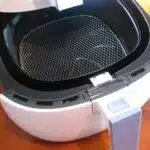The keyboard is an essential component of any computer system, and it is used extensively for typing, browsing the internet, and performing other tasks. However, over time, keyboards can become dirty and unhygienic due to the accumulation of dust, dirt, food particles, and other debris. A dirty keyboard not only looks unsightly but can also hinder its performance by causing keys to stick or stop working altogether. Therefore, it is essential to know how to clean a keyboard properly to maintain its functionality and hygiene.
In this article, we will discuss the various methods and techniques that can be employed to clean a keyboard effectively. We will cover both external cleaning methods such as wiping down the keys and internal cleaning techniques such as removing keycaps for deep cleaning. By following these steps carefully, readers will be able to keep their keyboards in excellent condition and ensure that they continue to perform optimally for many years to come.
The Importance Of Keyboard Maintenance
The importance of keyboard hygiene cannot be overstated. Keyboards are one of the most frequently used computer peripherals, and they harbor a significant amount of bacteria, dust, and dirt. These contaminants can accumulate over time and pose a health risk to users. Regular keyboard maintenance is essential to ensure that the keyboard remains clean and free from harmful bacteria.
Benefits of regular keyboard maintenance extend beyond improving hygiene; it also helps prolong the lifespan of the keyboard. Accumulated dirt and dust can interfere with the functionality of keys, especially when they are not pressed down as intended. Dust particles can get in between key switches, making them unresponsive or causing them to stick. Regular cleaning removes grime from keys and ensures that they remain responsive, which is crucial for efficient typing.
Furthermore, regular cleaning helps prevent costly repairs or replacements due to damage caused by accumulated debris or dirt. It is more cost-effective to maintain a keyboard than replace it altogether. It is recommended that users clean their keyboards every two weeks or whenever it appears dirty. Proper maintenance will save users money while ensuring the longevity of their equipment.
Understanding The Anatomy Of A Keyboard
Proper keyboard maintenance is essential to ensure that it functions optimally and lasts for a long time. Understanding the anatomy of a keyboard is an important first step in maintaining its overall health. Each key on the keyboard has a specific function, and knowing how they work together can help in identifying potential issues.
The anatomy of a keyboard includes various components such as the keys, switches, and connectors. The keys are what we press to input data into our computers or other devices. They are designed to be responsive and durable so that they can withstand frequent use over an extended period. The switches underneath each key are responsible for registering keystrokes and sending signals to the computer. These switches come in different types, but all have one common goal – to ensure accurate typing.
Understanding key function is also crucial when it comes to maintaining your keyboard’s health. There are different types of keys on a keyboard, including alphanumeric keys, function keys, and modifier keys. Alphanumeric keys are those that represent letters or numbers while function keys are used for specific tasks such as opening documents or adjusting volume settings. Modifier keys like Shift and Ctrl modify the actions of other keys when pressed simultaneously with them. Knowing the functions of these different types of keys can help you identify which ones need cleaning or replacement.
With proper knowledge of keyboard anatomy and key function, you can prepare yourself for cleaning your device effectively without damaging any components.
Preparation For Cleaning
- Prior to cleaning a keyboard, it is necessary to gather all supplies required for the task.
- The keyboard should be unplugged from any electronic device before beginning the cleaning process.
- Before cleaning the actual keyboard, any loose debris such as dust, dirt, or crumbs should be removed with a vacuum or a microfiber cloth.
- Utilizing the right cleaning supplies is important; a mild soap and warm water should be used to avoid damaging the keyboard.
- If wipes are used, they should be free of any harsh chemicals or solvents.
- After removing debris, the keyboard should be dried with a lint-free cloth before its use is resumed.
Gather Supplies
To clean a keyboard effectively, proper preparation is essential. The first step in preparing to clean your keyboard is to gather the necessary supplies. Organizing supplies beforehand can lead to an efficient cleaning process and ensure that you have everything you need to complete the task.
The most important supply for cleaning a keyboard is a can of compressed air. This will allow you to blow out any debris or crumbs that may be stuck between the keys. You should also have a soft-bristled brush on hand to gently remove any remaining particles from the surface of the keys. Additionally, it’s recommended that you use a microfiber cloth or cotton swabs dampened with rubbing alcohol to wipe down the keys and surrounding areas.
Other helpful supplies include a vacuum cleaner with a small attachment, which can be used to suck up any loose debris, as well as a mild cleaning solution if your keyboard has stubborn stains or grime buildup. It’s crucial to read all instructions carefully when using cleaning solutions and avoid getting any liquid inside the keyboard, as this could cause damage.
In summary, gathering supplies is an essential part of preparing for keyboard cleaning. By organizing your supplies beforehand and having everything you need on hand, you can ensure an efficient and effective cleaning process. With a can of compressed air, soft-bristled brush, microfiber cloth or cotton swabs dampened with rubbing alcohol, vacuum cleaner with small attachment and mild cleaning solution (if needed), you’ll be well-equipped to get your keyboard looking like new again!
Unplug Keyboard
Before beginning the cleaning process, it’s crucial to unplug your keyboard from the computer or any power source. This is an essential step in preparing for keyboard cleaning as it prevents any potential electrical damage and ensures your safety while cleaning. The importance of grounding cannot be overstated, especially when dealing with electronic devices like keyboards.
In addition to unplugging the keyboard, it’s also important to avoid using certain cleaning products. Harsh chemicals such as bleach or ammonia-based cleaners should be avoided as they can damage the keys’ finish and even cause discoloration. Instead, stick to mild cleaning solutions like rubbing alcohol or water mixed with a small amount of dish soap. It’s important to read all instructions carefully before using any cleaning product on your keyboard.
By following these preparation steps, you’ll be able to clean your keyboard safely and effectively without causing any damage. Remember to always unplug your keyboard before starting the cleaning process and avoid using harsh chemicals that could cause harm. With the right tools and techniques, you’ll have a clean and functioning keyboard in no time!
Remove Loose Debris
After unplugging your keyboard and ensuring your safety, the next step in preparing for cleaning is to remove any loose debris that may have accumulated between the keys. This can be done by using a vacuum cleaner to gently suction away any dirt or dust particles. It’s important to use a low-power setting to avoid damaging the keys or dislodging them from their sockets.
Alternatively, you can also use an adhesive cleaning gel designed specifically for keyboards. Simply press the gel onto the surface of the keyboard and lift it away to remove any debris. This method is particularly useful for removing crumbs or other small particles that may have become trapped between the keys.
By removing loose debris before beginning the actual cleaning process, you’ll be able to achieve a more thorough clean and avoid pushing dirt further into the keyboard. Whether you choose to vacuum debris or use an adhesive cleaning gel, taking this step will ensure that your keyboard is ready for a deep clean and functioning at its best.
External Cleaning Methods
As the old adage goes, “cleanliness is next to godliness.” This holds true for our keyboards as well. External cleaning methods are a crucial aspect of keyboard maintenance. These methods not only ensure hygiene but also extend the lifespan of the keyboard.
To begin with, before cleaning the keyboard, make sure that it is unplugged from any power source. Then take a disinfectant wipe and gently rub it over the keys and surface of the keyboard. Be careful not to use too much pressure while doing this. Cleaning solutions can also be used instead of disinfectant wipes, but one should ensure that they are safe for use on electronics.
Furthermore, external cleaning is not limited to just wiping down the surface and keys; it also includes cleaning between the keys. For this purpose, an unused toothbrush or a small brush can be used to dislodge any dirt or crumbs that may have accumulated between them. Once done, wipe down the keys and surface with a disinfectant wipe or cleaning solution.
In conclusion, external cleaning methods are essential for maintaining hygiene and extending the lifespan of your keyboard. The use of disinfectant wipes or cleaning solutions should be followed up by brushing between keys to remove any debris stuck in between them. In the subsequent section about using compressed air, we will explore another method of cleaning your keyboard more thoroughly.
Using Compressed Air
Benefits of Compressed Air
Using compressed air to clean your keyboard is an effective way to remove dust and debris without damaging the keys or internal components. Compressed air is a powerful tool that can blast away stubborn particles that are difficult to remove with other methods. It also dries quickly, so there is no risk of moisture damage to the keyboard.
Choosing the Right Compressed Air Canister
When selecting a compressed air canister for cleaning your keyboard, it is important to choose one that is specifically designed for electronics. These canisters are formulated to be non-conductive and safe for use on delicate electronic equipment. They also typically come with a fine nozzle attachment that directs the airflow precisely where it is needed.
To use compressed air, hold the canister upright and aim the nozzle at the keyboard from a distance of about six inches. Use short bursts of air rather than continuous streams, as this will reduce the risk of damage to the keys or internal components. Work in a methodical pattern across the entire surface of the keyboard, paying extra attention to areas around the edges of keys where debris tends to accumulate.
Transition into Subsequent Section:
Once you have removed as much dust and debris as possible using compressed air, it’s time to move on to cleaning with a soft brush. This step will help ensure that any remaining particles are dislodged and removed from your keyboard.
Cleaning With A Soft Brush
One effective way to clean a keyboard is by using a soft brush. Cleaning with a soft brush can help remove debris and dust that has accumulated on the keys. It is important to note that using the right kind of brush is crucial in ensuring that your keyboard will not be damaged during the cleaning process.
When choosing a soft brush for cleaning your keyboard, it is recommended to use one that is specifically designed for this purpose. Keyboard cleaning tools are available in various shapes and sizes, and they often come with bristles made from synthetic fibers. These brushes are gentle enough to avoid damaging your keyboard, but still effective enough to remove dirt and debris from between the keys.
When using cleaning solutions in conjunction with a soft brush, it is important to ensure that the solution you choose is safe for use on your keyboard. Some cleaning solutions can damage certain types of keyboards, particularly those made from materials like leather or vinyl. To ensure that you are using a safe solution, read the instructions carefully before applying it to your keyboard.
- Choose a soft brush specifically designed for keyboard cleaning
- Ensure the cleaning solution used is safe for your specific type of keyboard
- Use gentle strokes when brushing between keys
With proper care and attention, cleaning your keyboard with a soft brush can be an effective way to maintain its appearance and extend its lifespan. In the next section, we will discuss how to wipe down the keys with a microfiber cloth. By following these steps, you can keep your keyboard looking new and functioning properly for years to come.
Wiping Down The Keys
After cleaning your keyboard with a soft brush, it’s time to wipe down the keys. This step is crucial in removing any remaining dirt and bacteria that may have been left behind. Imagine wiping away all those crumbs and dust particles from in between the keys with disinfecting wipes, leaving your keyboard looking and feeling brand new.
When choosing cleaning solutions or disinfecting wipes for your keyboard, it’s important to select products that are safe for electronic devices. Avoid using harsh chemicals or excessive liquid, as this can cause damage to the keyboard’s delicate components. Instead, opt for alcohol-based disinfecting wipes or a mild cleaning solution specifically designed for electronics.
To begin wiping down the keys, start at the top row and work your way down to the bottom row. Use gentle pressure and make sure to get in between each key. Pay extra attention to areas where dirt and grime tend to accumulate, such as the space bar and around the edges of individual keys. Once you’ve finished wiping down all the keys, let them dry completely before using your keyboard again.
Transition: Now that you’ve wiped down your keyboard’s surface, it’s time to learn about some deep cleaning techniques that can help ensure optimal performance and longevity of your device.
Deep Cleaning Techniques
- Vacuuming is an effective method for removing debris and dust from a keyboard.
- Compressed air is useful for dislodging particles that could be trapped between the keys.
- Disinfecting a keyboard should be done with a safe, non-toxic cleaner.
- It is important to turn off the computer before cleaning the keyboard.
- Specialized cleaning tools may also be used for a deep clean of the keyboard.
- After cleaning, be sure to allow the keyboard to dry completely before using it.
Vacuuming
Maintaining proper keyboard hygiene is crucial to ensuring the longevity of your device and promoting a healthy work environment. One effective method for removing dust and debris from your keyboard is through vacuuming. This deep cleaning technique can effectively remove particles that are not visible to the naked eye, thereby preventing the accumulation of bacteria and other harmful germs.
To start, prepare your vacuum cleaner by attaching a soft-bristle brush attachment. This will enable you to gently sweep across your keyboard’s surface without damaging any delicate keys or switches. Make sure to turn off your computer and unplug the keyboard before beginning the process. Next, hold your vacuum at a distance of about half an inch above the keys and begin sweeping in a back-and-forth motion across each row of keys. Pay attention to crevices between keys where dust tends to accumulate.
After completing this process, use a soft cloth or cotton swab dipped in rubbing alcohol to clean any stubborn stains or grime that may still be present on your keyboard’s surface. Remember, maintaining regular keyboard hygiene practices such as dust removal can prevent bacteria growth and promote overall cleanliness in your workspace. By keeping up with these simple techniques, you can ensure that both you and your computer stay healthy and productive for years to come.
Overall, vacuuming is an effective deep cleaning technique for removing dust from keyboards while preventing bacterial growth. By following the proper procedures such as using a soft-bristle brush attachment and cleaning with rubbing alcohol afterward, you can maintain proper keyboard hygiene and extend the lifespan of your device. These simple steps can help create a healthier work environment while also promoting productivity and efficiency in daily tasks.
Compressed Air
In addition to vacuuming, another effective deep cleaning technique for keyboards is using compressed air. Compressed air can remove dust and debris from hard-to-reach areas of the keyboard, such as between keys and beneath them. This method is especially useful for those who frequently eat or drink near their keyboards, as it can dislodge any crumbs or spills that may have become trapped in the keyboard.
To use compressed air, first ensure that your keyboard is turned off and unplugged. Next, hold the canister about 2-3 inches away from the keyboard and use short bursts of air to blow out any debris. Be sure to focus on areas where dust tends to accumulate, such as around the edges of keys and in crevices. After using compressed air, you may also want to wipe down your keyboard with a cleaning solution for optimal disinfection.
Overall, incorporating both vacuuming and compressed air into your keyboard deep cleaning routine can help promote a healthy work environment by preventing bacterial growth and promoting overall cleanliness. By taking these simple steps towards proper keyboard hygiene practices, you can ensure a longer lifespan for your device while also serving others by creating a productive workspace free of harmful germs.
Disinfecting
After discussing the benefits of vacuuming and using compressed air for deep cleaning keyboards, it is also important to consider disinfecting techniques. Disinfecting helps eliminate harmful germs that may be present on the surface of the keyboard, making it a crucial step in maintaining a hygienic workspace. There are various best disinfectant solutions available in the market that can effectively kill germs and viruses without damaging your device.
When selecting a disinfectant solution for your keyboard, it is essential to choose one that is safe for electronics. Alcohol-based solutions are commonly used for disinfecting electronics since they evaporate quickly and do not leave any residue behind. It is recommended to use a solution with at least 70% alcohol content as it is proven to effectively kill germs and bacteria.
To disinfect your keyboard, first, turn off and unplug your device. Dampen a soft cloth or microfiber towel with the disinfectant solution and gently wipe down the entire surface of the keyboard, paying close attention to high-touch areas such as keys, buttons, and touchpads. Avoid using too much liquid as excess moisture can damage your device. Afterward, allow your keyboard to air dry completely before turning it back on. By incorporating proper disinfection techniques into your deep cleaning routine, you can help maintain a healthy work environment while extending the lifespan of your device.
Removing Keycaps
Removing Keycaps: Removing keycaps is an essential part of keyboard cleaning, but it should be done carefully. If you are not careful while removing the keycaps, you may damage them or the keyboard itself. Hence, it is crucial to know how to remove keycaps safely.
Potential Damage: If you apply too much force while removing a keycap, it can break or snap off. Similarly, if you use sharp objects like screwdrivers or knives to pry off the keycaps, they can scratch or damage the keyboard surface. Moreover, some keyboards have fragile clips that hold keycaps in place; applying excessive pressure on these clips can cause them to break.
Alternative Methods: The safest way to remove keycaps is by using a proper tool such as a keycap puller. This tool will lift up the caps without damaging them or the keyboard surface. However, if you don’t have a tool at hand, you can use alternative methods like dental floss or credit cards. Dental floss can be used to slip under one edge of the cap and gently lift it off. Credit cards can also be inserted under one edge of the cap and used as leverage to pop it off.
A rule of thumb when removing keycaps is to take your time and be gentle. Rushing or forcing anything will only lead to more problems than solutions. Therefore always exercise patience and caution when attempting any maintenance-related tasks on your keyboard.
Moving on from removing keycaps let’s look at soaking them in greater detail.
Soaking Keycaps
- Soaking keycaps is an effective way to clean a keyboard, as it allows the liquid to penetrate between keys and remove the dirt and debris.
- Generally, a brush is needed to agitate the keycaps in order to help remove the dirt.
- Additionally, a mild detergent in a cleaning solution is recommended to ensure that any bacteria and dirt is removed from the surface of the keycaps.
- Finally, a dry cloth can be used to dry the keycaps after the soaking process is complete.
Soaking Keycaps
Keycap material options play a crucial role in determining how one should soak their keyboard keys. Different keycaps are made of different materials, such as ABS, PBT, and rubber. Plastic keycaps are most common, but they tend to absorb oil and dirt quickly, requiring frequent cleaning or replacement. On the other hand, PBT keycaps are more durable and resistant to shine from oil and dirt accumulation. Rubber keycaps have a soft texture that makes them comfortable to type on but can be easily stained by oils or greases.
The benefits of replacing keycaps after soaking them are numerous. Firstly, it ensures that you have a clean keyboard that is free from harmful bacteria or germs that could cause illness or infections. Secondly, it improves the aesthetics of your keyboard since new keycaps give it a fresh look and feel. Lastly, new keycaps allow for customization options such as different colors and designs that can enhance user experience.
When soaking keycaps, it is important to follow the manufacturer’s instructions to avoid damaging the keys or compromising their functionality. It is recommended to use warm water and mild soap when cleaning plastic and rubber keycaps while avoiding using harsh chemicals such as bleach or alcohol-based solutions. After soaking the keys for some time, use a soft-bristled brush to remove any debris before rinsing them with clean water and leaving them out to dry completely before reattaching them back onto the keyboard.
Tools Needed
To properly soak keycaps, it is important to have the necessary tools at hand. These tools can make the process easier and more effective while ensuring that the keys are thoroughly cleaned. One essential tool is a cleaning solution that is mild enough not to damage the keycaps but strong enough to remove dirt and grime. Disinfectant wipes can also be used to eliminate bacteria and germs on the surface of the keys.
When choosing a cleaning solution for soaking keycaps, it is important to select one that does not contain harsh chemicals such as bleach or alcohol-based solutions. These chemicals can damage the material of some keycaps, especially rubber and plastic ones. A mild soap mixed with warm water can effectively clean most keycaps without causing any harm. Additionally, using a soft-bristled brush can help remove debris from hard-to-reach areas.
In addition to cleaning solutions and disinfectant wipes, having a clean towel or cloth on hand is also important when soaking keycaps. This towel can be used to dry off the keys after they have been soaked in water or cleaning solution. It is crucial to ensure that the keys are fully dry before reattaching them back onto the keyboard as moisture can cause damage over time. By using these tools, one can effectively soak their keyboard keys without causing any harm or compromising their functionality.
Cleaning The Inside Of The Keyboard
Have you ever wondered what can be found inside your keyboard? The truth is, a lot of debris, dust, and other particles can accumulate in between the keys. Cleaning the inside of a keyboard is essential not only for aesthetic purposes but also for its longevity. Neglecting to clean it regularly may lead to malfunction or damage to the keys.
Internal cleaning requires some tools such as compressed air and a small brush. Before starting, make sure to unplug the keyboard from the computer. Turn it upside down and gently shake it to remove any loose debris. Then, use compressed air to blow out any remaining dust or dirt from between the keys. Be careful not to blow too hard as this may cause damage.
Next, use a small brush to remove any stubborn debris that might still be stuck inside. If you don’t have a brush available, you can also use cotton swabs or toothpicks. Make sure not to apply too much pressure when removing debris as this may damage or break the keys. Once all of the debris has been removed, flip the keyboard back over and plug it back into your computer.
Reassembling The Keyboard
After cleaning the inside of your keyboard, it’s time to put everything back together. Reassembling the keyboard requires a bit of care and attention to detail to ensure that you don’t damage any of the components or connections. Before you start reassembling, take a moment to review these reassembling techniques.
Firstly, make sure that all of the keys and buttons are aligned correctly before attempting to snap them back into place. It’s important not to force anything, as this can cause damage or misalignment. Start by aligning the key or button over its corresponding slot and then press down gently until you hear a click. Repeat this for all keys and buttons until they are in place.
Once all keys and buttons are back in place, it’s time to replace the screws that secure the keyboard casing together. Use caution when tightening screws, as overtightening can strip threads or crack plastic parts. It’s recommended that you use a screwdriver with adjustable torque settings if possible. After tightening all screws, test each key and button for proper operation before replacing any covers or panels.
If you encounter any issues during reassembly, try troubleshooting tips such as checking connections or reviewing manufacturer instructions. Taking your time during reassembly will save you time in the long run by preventing future problems with your keyboard.
Next up: Tips for preventing future build-up…
Tips For Preventing Future Build-Up
Regular cleaning of keyboards is an important step for preventing future build-up. This can involve wiping down the keys and other surfaces with an appropriate cleaner, as well as cleaning out any debris from inside the keyboard. Additionally, coating protection can be used to help reduce the accumulation of dust, dirt, and other particles. This can involve applying an appropriate coating to the keyboard, such as a silicone coating, which can be reapplied as needed.
Regular Cleaning
To maintain optimal performance and longevity of a keyboard, regular cleaning is crucial. The frequency of cleaning depends on the usage and environment in which the keyboard is used. For heavy usage, it is recommended to clean the keyboard at least once a week. However, for light usage, once every two weeks should suffice.
When it comes to choosing the best cleaning products for a keyboard, it is important to avoid harsh chemicals that can damage the delicate components of the keyboard. Instead, opt for gentle cleaning solutions such as rubbing alcohol or mild dish soap diluted with water. Use a soft microfiber cloth to gently wipe down each key and remove any dirt or debris.
Regular cleaning not only prevents future build-up but also ensures that the keyboard stays hygienic and free from germs. By following these simple yet effective tips for regular cleaning and using gentle cleaning solutions, one can keep their keyboard in top-notch condition for years to come.
Coating Protection
To prevent future build-up on a keyboard, it is essential to not only clean it regularly but also protect its coating. The keyboard’s protective coating safeguards its surface from wear and tear caused by repeated use, which can lead to the fading of key labels or even permanent scratches. To extend the life of a keyboard’s coating, avoid using harsh cleaning agents that might strip the protective layer. Instead, choose gentle solutions such as rubbing alcohol or mild dish soap diluted with water.
When applying any cleaning solution to a keyboard, it is important to be cautious and apply it only in small amounts directly onto a microfiber cloth rather than directly on the keyboard surface. This prevents liquid from seeping into the keyboard’s internal components which could cause electrical damage. Also, ensure that the cloth is damp enough to clean effectively but not too wet that it drips onto the keys or other parts of the device.
Lastly, if additional protection is needed for a keyboard’s coating, consider applying a protective film or cover. These films are typically made of silicone or plastic and can provide an extra layer of protection against spills or scratches. However, be sure to select one specifically designed for your type of keyboard model and follow proper installation instructions carefully to prevent air bubbles or misalignment issues. By following these tips for protecting a keyboard’s coating, one can maintain its appearance and functionality for an extended period while avoiding costly repairs or replacements in the future.
How Often Should You Clean Your Keyboard
As frequent keyboard users, it is important to maintain cleanliness and hygiene to avoid the accumulation of dirt and germs that can cause health problems. The frequency of cleaning your keyboard depends on how often you use it and the environment you use it in. For example, if you use your keyboard daily in a dusty or dirty environment, then it may require more frequent cleaning than if you use it occasionally in a clean environment.
Hygiene tips for keyboard cleaning include using a microfiber cloth or compressed air to remove dust and debris from between the keys. Additionally, using disinfectants like alcohol wipes or sprays can effectively kill off bacteria and prevent the spread of germs. However, caution should be taken when using liquids on keyboards as they can damage electrical components.
To emphasize the importance of cleanliness, here is an example table showcasing the number of bacteria found on commonly used items:
| Item | Number of Bacteria |
|---|---|
| Keyboard | 3,295 |
| Toilet seat | 295 |
| Kitchen counter | 1,736 |
From this table, we can see that keyboards harbor significantly more bacteria than even toilet seats. This highlights the need for regular cleaning to maintain good hygiene practices.
In conclusion, maintaining a clean and hygienic keyboard is essential for personal health and well-being. By following these hygiene tips and determining an appropriate cleaning frequency based on usage and environment, users can enjoy a clean workspace free from harmful bacteria. Enjoy a clean and hygienic keyboard by incorporating these practices into your routine today.
Conclusion: Enjoy A Clean And Hygienic Keyboard
Regular cleaning of your keyboard can provide numerous benefits, such as preventing the spread of germs and extending its lifespan. By removing dirt, dust, and grime from the keys and crevices, you can minimize the presence of harmful bacteria that can cause illness or infection. In addition, keeping your keyboard clean also helps to maintain its functionality and performance over time.
To effectively clean your keyboard, there are several products that you can use. One option is a compressed air duster, which blasts away debris from hard-to-reach areas without damaging sensitive components. Another effective product is a microfiber cloth, which is gentle on surfaces and traps dirt particles for easy removal. For more stubborn stains or buildup, you may want to consider using a mild detergent solution or specialized cleaning wipes designed for electronics.
Incorporating regular keyboard cleaning into your routine can help to ensure that you have a hygienic and functional workspace. By using effective cleaning products and methods, you can enjoy the benefits of a cleaner keyboard for years to come. So take some time to give your keyboard a thorough cleaning today – your health and productivity will thank you!
Conclusion
Proper keyboard maintenance is crucial for ensuring the longevity and efficiency of your device. Neglecting to clean your keyboard can lead to a buildup of dirt, dust, and debris that can interfere with its functionality and even pose health risks. By understanding the anatomy of your keyboard and learning how to properly clean it, you can maintain a hygienic workspace and keep your device in optimal condition.
To begin cleaning your keyboard, start by gathering the necessary materials such as compressed air, alcohol-based cleaning solutions, and microfiber cloths. Before disassembling the device, ensure that it is unplugged from any power source. External cleaning methods involve wiping down the keys with a damp cloth or using compressed air to remove debris from between them. For deeper cleaning, disassemble the keyboard and use alcohol-based solutions to clean individual components.
It is recommended that you clean your keyboard at least once every three months or more frequently if you use it heavily or share it with others. Neglecting to clean your keyboard can lead to mechanical issues, decreased performance, and even illness due to bacterial growth. By following these steps for proper maintenance and cleaning, you can enjoy a functional and hygienic workspace. Remember: prevention is key when it comes to maintaining the health of your devices!
Image Credits
- “Piano Keyboard” by alexanderward12 (featured)





























